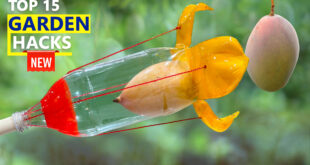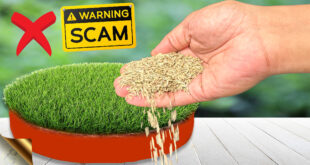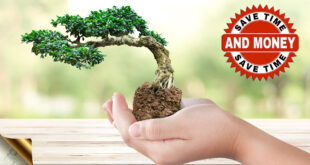In Today’s post we will look into some important care tips, Do’s and Don’ts, propagation and some basic info you need to know while growing Ponytail Palm, a visually stunning ornamental houseplant.
Ponytail palm also known as the bottle palm tree or the elephant foot tree. It’s actually not a palm tree. It’s in fact a succulent plant and a member of the Agave family.
Pony tail palm is a very beautiful and a popular houseplant with a bulb-like trunk and beautiful long curly leaves which looks like a pony tail.
This bulbous trunk is similar to the fat caudex of adenium or the desert rose and in both the function is to store water within the plant. Hence, both these plants require infrequent watering. Now let’s look into its important care tips:
- Sunlight: As I said earlier, the term palm used to name this plant as ponytail palm is a misnomer. It is not a palm. Many newbies may think it to be a palm such as Areca palm and keep in full shade. This is not true. Ponytail palm actually need full bright sunlight similar to adenium. But this is such a forgiving plant, it survives and adapts even to low light conditions. But for best results keep in full sunlight. In summer, to protect it from very hot sun, you can keep it under a 50% green shade net.
- Watering: This is a succulent plant and needs less frequent watering. This is infact a very hardy plant but the most common reason for its death is over watering. So be cautious while watering this plant. Best is finger dip method. You dip one or two inch of your finger to check for moisture. Water it only if its dry. Whenever you water, give it a deep and thorough watering until the water comes out of the drainage holes.
- Fertilizer: This plant requires adding a handful of some decomposed cowdung or even vermicompost once every 3 months. That is all is needed for this plant. Do not try to add more fertilizers to this plant, especially the NPKs and other chemical fertilziers.
- Pot Size and Repotting: It is best to allow them to become root bound before repotting them. And when you do repot them, use a pot that is only one or two inches larger than the previous pot. If you repot them into a larger pot, they can get too much water at once, which can lead to rot.
- Potting Soil: They need a good well draining soil with lots of sand mixed in your regular garden soil. Best is to use a succulent soil mix like using sand, perlite, garden soil, charcoal and other stuff in different proportions. One such recipe you can follow is:
Garden Soil: 30 to 40% + River or Construction Sand 30 to 40% (Never use beach sand). Then you can add pebbles or chips about 5%, Then about 10% Compost like decomposed cowdung or vermicompost. Then about 10% Perlite, small Charcoal pieces, neem cake powder, etc if you have them. That’s it! - Propagation: Mature plants usually develop pups or babies which are actually side shoots arising from the mother plant, very much similar to other plants like Aloe vera and others. These smaller pups can be separated away from the mother palm and grown as independent plants.
 GKVKs – Gardening Tips and Store Gardening Tips and Store
GKVKs – Gardening Tips and Store Gardening Tips and Store



